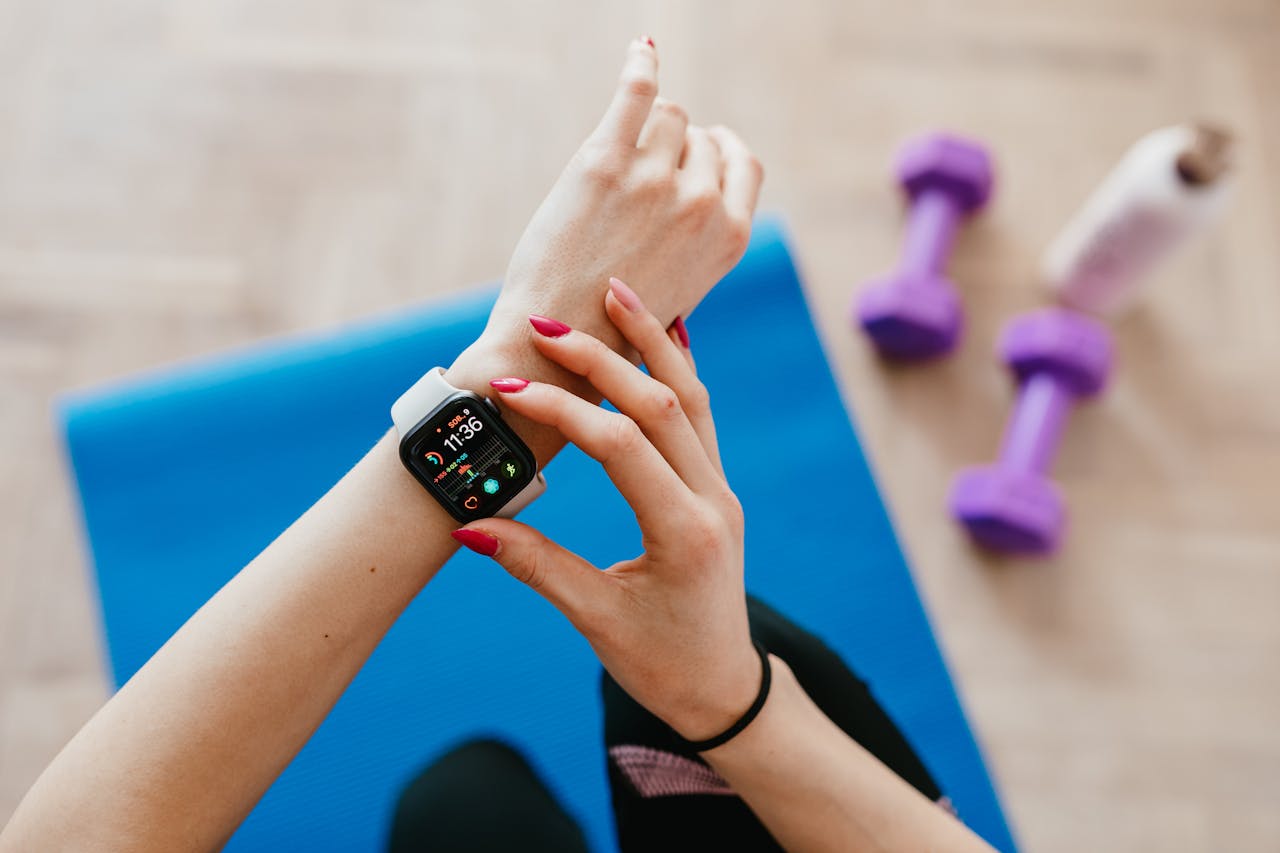Generate single title from this title What is the role of artificial intelligence in enhancing fitness concepts in 70 -100 characters. And it must return only title i dont want any extra information or introductory text with title e.g: ” Here is a single title:”

Write an article about
After searching and seeing, it was confirmed that the artificial intelligence was not just robots in fiction films. He entered the core of our daily life, and today it changes the concept of fitness from its roots.
So start with us on the “He” website on an amazing journey to the world of advanced technology in the human body, to write a completely new chapter in the story of your fitness and health. This is not a scientific imagination but rather a reality that we live today; To discover through it, “How smart devices analyze every movement you make to design exercises designed for you alone, the secrets of smart tracking that predicts your level of performance and protects you from injuries before they occur, and how your wearable devices have become a mastermind that understands the needs of your body more than you give up.”
Let’s start this exciting journey; Where artificial intelligence becomes your intelligent partner on your fitness trip after knowing the following:
About the development of fitness through artificial zakat
The field of physical fitness still witnesses a radical transformation thanks to artificial intelligence (AI), as it moved from the mere replacement of the activity to the introduction of an intelligent and sensory fitness system for the future. Here is an overview of this development; This is as follows:
The first stage … the basic tracking and monitoring (the era of raw data)
The first stage focused on collecting data using the basic artificial intelligence tools for statistics and identifying patterns through applications. On the torrent of the example: “The wearable devices such as” the first -step follower that calculates the steps, distance and calories in general were to provide graphs and simple solutions to display historical data. “Note that there was no real allocation or smart recommendations.
The second stage .. initial allocation and recommendations (the era of smart applications)
This stage focused on data analysis to provide recommendations using artificial intelligence tools such as Machine Learning to analyze user patterns, through many applications; For example: Applications such as freeletics and Fitbod стали are used to create dedicated exercises based on the user’s goals, fitness level, and available equipment, in order to analyze the user performance during exercises to adjust the difficulty of the exercise automatically, as well as providing initial food recommendations based on goals (such as muscle building or weight loss).
The third stage .. correction and analysis in the actual time (the era of the virtual personal trainer)
This stage focused on the interaction and instant evaluation using artificial intelligence tools such as computer vision and natural language processing (NLP); For example, the Zumba® and Future phone applications use the phone camera to watch exercise performance and make immediate notes on accuracy and position to reduce the risk of injuries. The appearance of smart mirrors such as Mirror and Tonal also merges live exercises with the artificial intelligence analysis of the user’s performance. Also, audio interaction with virtual assistants such as Amazon Alexa for quick tips about exercises.
The fourth stage .. comprehensive integration and prediction (the era of fitness and preventive)
This stage focuses on preventing problems and improving comprehensive health using artificial intelligence tools such as Deep Learning and predictive artificial intelligence, through applications (current and future); For example: “predictive analyzes that expect the risk of injuries based on the performance pattern and the muscle balance, integration with health data by combining fitness data (heart rate, sleeping) with other health data (glucose level, medical analyzes) to provide a comprehensive picture of the user user, dynamic adaptation to modify the training plan automatically based on the levels of tension (Stress) and the quality of sleep recorded by the user, Augmented reality (AR) to integrate interactive virtual exercises in the real world, where artificial intelligence creates virtual running paths or strength exercises in the living room.
Positive and negative effects of artificial intelligence on the promotion of physical fitness concepts

Artificial intelligence still develops fitness from a unified general concept that suits everyone to a very customized and adaptive experience. If it is transformed from just a “counter” into a personal trainer, a dietary assistant, and a health observer working around the clock. In general, the future carries more integration between the digital and physical worlds, which makes the fitness a natural and smooth part of our daily life, but with the need for constant awareness of the challenges of privacy and balance in use. As for the positive and negative effects, they are as follows:
Positive effects
- Customize the sports experience by analyzing personal data to provide exercises and food programs for each individual.
- Adaptation of exercises according to the level of fitness and progress.
- Accurate tracking and feedback by monitoring sports performance with high accuracy via smart devices.
- Providing immediate analyzes and corrections for wrong movements
- Motivating users by creating interactive personal and collective challenges.
- Create smart reward systems that promote continuity.
- Save time and effort through effective exercises designed according to the available time.
- Cancel the need to move to gyms.
Negative effects
- Excessive dependence on technology.
- Loss of basic sporting skills.
- Low awareness of the body and its natural signals.
- Collect huge amounts of personal health data
- The ability to penetrate or use data for commercial purposes
- High cost of smart devices and subscriptions.
- Reducing direct social interaction in gyms.
- The possibility of providing unsafe tips due to artificial intelligence restrictions.
- Not to take into account the complete individual differences completely.
On the sidelines … important tips for achieving the optimal balance between artificial intelligence and fitness

- It is recommended to achieve the maximum benefit from artificial intelligence in physical fitness while avoiding its negatives by combining them and using technology as an aid tool and not a complete alternative.
- Preserving traditional physical activity and social interaction
- Human professionals review to ensure the suitability of programs
- Care to protect personal data and read the conditions of privacy
Finally, Artificial intelligence will remain a powerful tool that can support the world of fitness, but its success depends on how to use it wisely and balanced.
.Organize the content with appropriate headings and subheadings (h1, h2, h3, h4, h5, h6). Include conclusion section and FAQs section at the end. do not include the title. it must return only article i dont want any extra information or introductory text with article e.g: ” Here is rewritten article:” or “Here is the rewritten content:”

